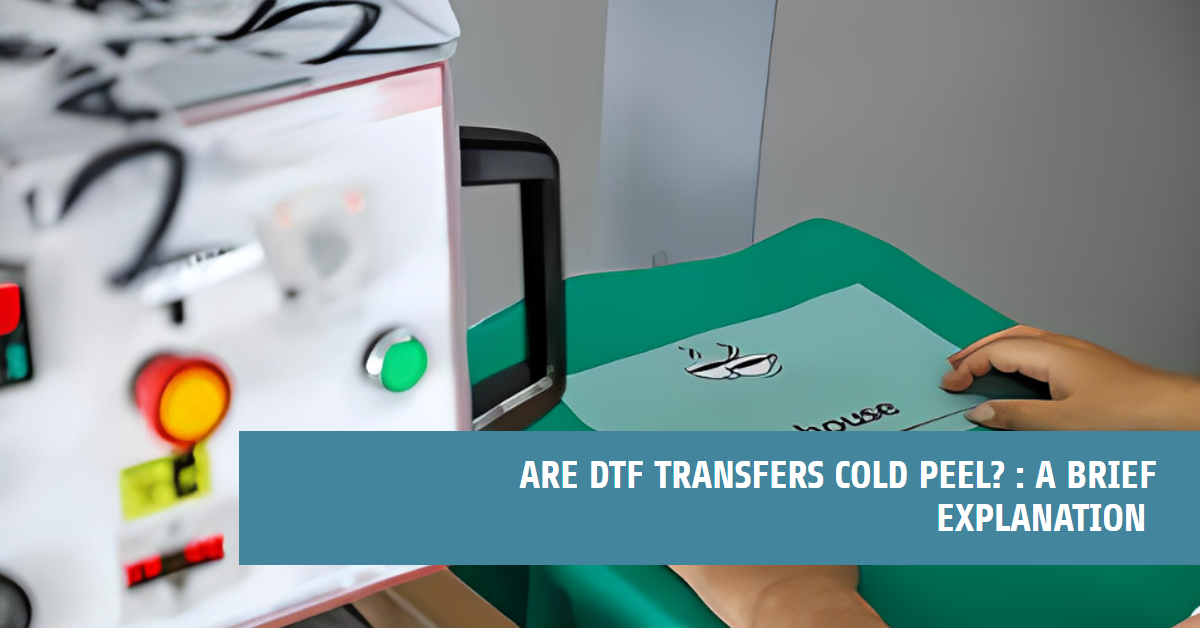Among the most popular digital printing methods is Direct Film printing, which uses DTF film. This technique differs from conventional printing methods in that it transfers images onto clothing. One of the most intriguing technical aspects of this process is the use of hot peel film and cold peel film.
Let’s Discuss the Types of DTF Films
Types of DTF Films
Not all DTF transfers are cold peel. There are two main types of DTF transfer films: hot peel and cold peel.
Hot Peel Films
Hot Peel DTF transfers are the more common type. They use a wax-based release liner that melts when heat is applied, allowing the transfer to be peeled off immediately. This makes them ideal for high-volume production, as they are very quick and efficient. However, they are not suitable for all fabrics, as the high heat can damage some materials.
Cold Peel Films
Cold peel DTF transfers use a silicone-based release liner that does not require heat to activate. This means they can be peeled off at room temperature, making them a good choice for delicate fabrics or those that cannot withstand high heat. However, they are not as fast or efficient as hot peel transfers, and they may require a higher press time.
What is the Difference Between Hot Peel and Cold Peel DTF Films?
| Property | Cold Peel | Hot Peel |
| Release Liner | Silicone-based | Wax-based |
| Peel Temperature | Room temperature | Requires heat (140°C - 150°C) |
| Speed | Slower | Faster |
| Efficiency | Less efficient for large volumes | More efficient for large volumes |
| Washing Durability | Excellent | Good |
| Fabric Compatibility | Wider range, including delicate fabrics | Limited to heat-resistant fabrics |
| Cost | Typically lower | Typically higher |
| Finish | Matte | Glossy |
| Applications | Small designs, detailed work, special fabrics | Large designs, high-volume production, common fabrics |
Is Cold Peel Film Suitable for DTF Transfer?
Yes, Cold Peel Film is absolutely suitable for DTF transfers. In fact, it's a great choice for many projects depending on your specific needs.
Is Cold Peel Efficient Than Hot Peel Film?
Cold peel transfers are often seen as less efficient compared to hot peel transfers. We find that hot peel transfers significantly reduce workflow time, which makes them an excellent option for large-scale operations. This efficiency comes from the ability to peel the transfer immediately after it's removed from the heat press while it's still hot.
In contrast, with cold peel transfers, you need to wait for the transfer to cool down completely before peeling. This waiting period can be quite time-consuming, and in our view, it's not ideal for handling bulk orders or projects requiring quick turnarounds.
Which is More Better Cold Peel or Hot Peel Films?
In our opinion, both hot peel film and cold peel film offer distinct transfer features that cater to various printing needs. In a general printing business context, we believe that choosing DTF hot peel film is most suitable for large volume printing on common fabrics like cotton T-shirts. This method streamlines the process and is efficient for such materials.
On the other hand, if you're dealing with more specialized printing tasks, such as creating complex and finely detailed small patterns, cold peel film is the way to go. It works better on special materials like tarpaulin, coated cloth, canvas, and flannelette. This difference is crucial to understand, as it helps in selecting the right film based on your specific printing requirements.

